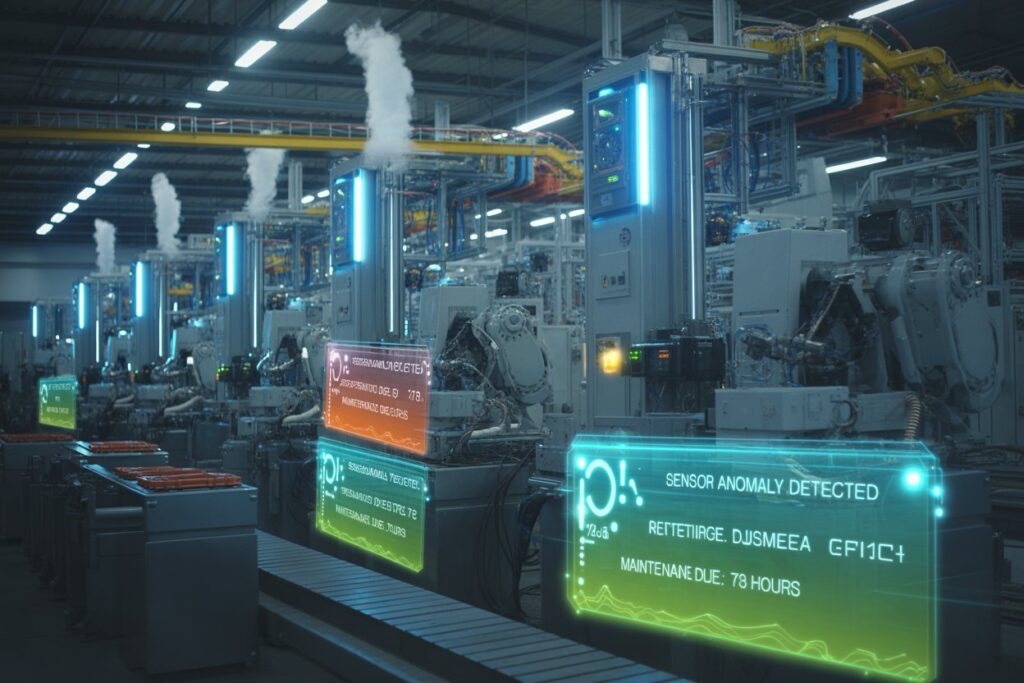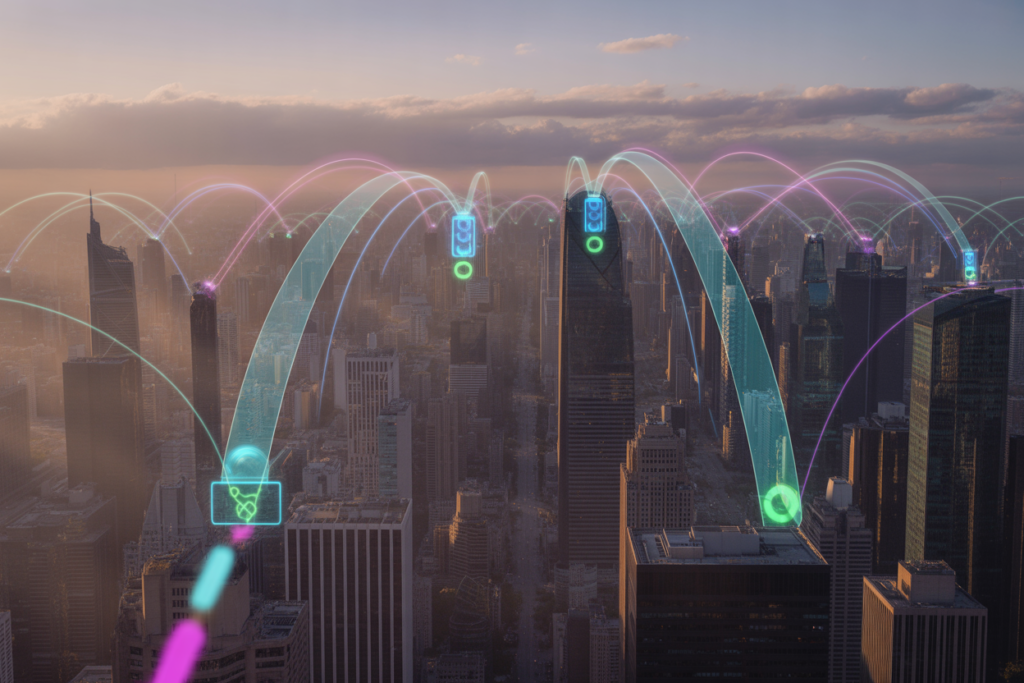Edge computing has emerged as a cornerstone of modern digital infrastructure, shifting data processing from centralized cloud data centers to the periphery of networks—closer to where data is generated and consumed. This paradigm enables real-time decision-making, reduces latency, and optimizes bandwidth in an era where IoT devices, 5G networks, and AI applications generate unprecedented volumes of data. As of October 2025, the global edge computing market is valued at $16.45 billion, up from $10.8 billion in 2023, and is projected to surge to $500 billion by 2030, according to STL Partners and Gartner forecasts. Driven by the explosion of connected devices—expected to hit 79.4 zettabytes of data generation by 2025—these developments are reshaping industries from healthcare to smart cities. Innovations in AI integration, security enhancements, and hybrid cloud-edge architectures are accelerating adoption, with 75% of enterprise data now processed at the edge. This article explores the fundamentals, recent advancements, applications, challenges, and future trajectory of edge computing developments, illuminating how they are enabling a more responsive, efficient, and secure digital world.
The Fundamentals of Edge Computing
What Is Edge Computing?
Edge computing decentralizes computation by processing data near its source—on devices, local servers, or micro data centers—rather than routing it to distant clouds. This “edge” refers to the network’s perimeter, encompassing endpoints like sensors, smartphones, or industrial machines. Core principles include:
- Low Latency: Processing occurs in milliseconds, critical for applications like autonomous vehicles.
- Bandwidth Optimization: Only essential data travels to the cloud, reducing network strain.
- Resilience: Localized processing ensures functionality during connectivity disruptions.
- Scalability: Modular nodes adapt to growing data volumes from IoT ecosystems.
In 2025, edge computing complements cloud systems in a “computing continuum,” where hybrid models blend centralized analytics with distributed execution. Unlike fog computing (a subset focused on intermediate layers), edge emphasizes endpoint intelligence, often powered by AI chips like NVIDIA’s Jetson series for on-device inference. Gartner predicts that by year’s end, 75% of enterprise-generated data will be created and processed outside traditional data centers, underscoring edge’s shift from niche to necessity.
The Evolution of Edge Computing
Edge computing’s roots trace to the 1990s with content delivery networks (CDNs), but it gained momentum in the 2010s amid IoT proliferation. Early pilots focused on telecom edges for 4G optimization, but 5G’s arrival in 2019 catalyzed widespread adoption by enabling ultra-low latency (under 5ms). The COVID-19 pandemic accelerated remote operations, pushing 40% of enterprises toward edge by 2022. By 2025, developments like AI-specific edge chips and blockchain integration have matured the field, with companies like AWS (via Greengrass 3.0) and HPE (Edgeline systems) launching enhanced platforms for AI and analytics. From experimental deployments to 85% SaaS integration via Edge-as-a-Service (EaaS), edge has evolved into a strategic imperative, with 50 companies—such as NodeWeaver and Zenlayer—leading the charge. This progression reflects a broader trend: from reactive data handling to proactive, intelligent ecosystems.
Major Developments in Edge Computing
1. AI and Machine Learning at the Edge
The fusion of AI with edge computing is perhaps the most transformative development in 2025, enabling sophisticated inference on resource-constrained devices. NVIDIA’s Jetson series and Intel’s NUCs bring unprecedented compute power, allowing edge nodes to run models like PyTorch and ONNX frameworks with 99% accuracy for tasks like predictive maintenance. Barbara’s Edge AI platform, updated in 2024, now features GPU compatibility and cybersecurity enhancements, processing 10x more data locally. By 2025, 75% of AI workloads will occur at the edge, reducing cloud dependency and latency for real-time applications.
Applications:
- Industrial Automation: Edge AI detects equipment failures 40% faster.
- Retail: Smart kiosks personalize recommendations in milliseconds.
- Healthcare: Wearables analyze vitals on-device, alerting in 0.1 seconds.
Case Study: Acisa’s 2025 edge-based digital twin for traffic intersections integrates AI to optimize urban mobility, reducing delays by 25%.

2. 5G and 6G Integration for Ultra-Low Latency
5G has been pivotal, but 2025 developments herald 6G’s dawn, promising sub-1ms latency and AI-native networks. Verizon’s 5G Edge with AWS Wavelength now supports 75 billion IoT devices, enabling real-time analytics for smart cities. Cisco’s IoT Operations Dashboard, expanded in June 2025, centralizes management, cutting deployment times by 40%. 6G prototypes focus on higher bandwidth and energy efficiency, integrating edge for holographic communications and autonomous systems.
Impact:
- AR/VR: Seamless experiences with <5ms latency.
- Logistics: Real-time shipment tracking reduces delays by 20%.
- Telecom: Edge nodes offload 50% of base station traffic.
3. Security and Blockchain Enhancements
Security remains paramount, with 72.7% of businesses hit by ransomware in 2023; 2025 developments emphasize edge-specific defenses. Barbara’s platform adds Zero Trust and AI SOC agents, while blockchain integration ensures tamper-proof data validation in decentralized systems. HPE’s Edgeline systems incorporate encryption for AI workloads, reducing breach risks by 25%.
Applications:
- IoT Security: Blockchain secures device communications.
- Compliance: GDPR-aligned edge processing.
- Threat Detection: AI flags anomalies in real-time.
Case Study: AI EdgeLabs’ 2025 Red Hat-certified platform integrates with AWS Greengrass, enhancing security for edge AI by 40%.
4. Edge-as-a-Service (EaaS) and SaaS Convergence
EaaS, a 2025 trend, offers subscription-based edge infrastructure, mirroring SaaS’s 85% adoption rate. Providers like NodeWeaver deliver self-managing platforms, while Zella DC’s micro data centers support hybrid models. This convergence enables SMEs to deploy edge without heavy CapEx, with 23.4% of investments in strategy and planning.
Impact:
- Cost Reduction: 40% lower infrastructure maintenance.
- Scalability: Rapid deployment for startups.
- Innovation: EaaS fosters AI experimentation.
5. Sustainability and Green Edge Initiatives
Edge reduces data transmission energy by 40%, aligning with net-zero goals. 2025 developments include solar-powered nodes and efficient chips, with American Tower expanding green infrastructure. Gartner notes 30% less energy in edge deployments versus cloud.
Applications:
- Smart Cities: Energy-efficient traffic management.
- Remote Sites: Solar edge for off-grid IoT.
- Carbon Tracking: Real-time emissions monitoring.
6. Hybrid Cloud-Edge Continuum
The “edge/cloud X-continuum” integrates seamless data flow, as per CEN-CLC/JTC 25 standards. 2025 roadmaps emphasize orchestration, with 51% of enterprises adopting hybrid models. ETSI’s NFV standards consolidate networks for edge efficiency.
Impact:
Image Prompt 2: “A sprawling smart city skyline at dusk, with edge nodes embedded in traffic lights and buildings glowing as they process 5G data; holographic streams connect to distant clouds, illustrating the hybrid continuum with neon connectivity lines.”
- Style: Urban-futuristic, vibrant, with layered cityscapes and data flows.

Applications of Edge Computing Developments
1. Healthcare
Edge enables real-time vitals monitoring, with wearables alerting in 0.1 seconds—saving lives during emergencies. By 2025, 75% of medical data processes at the edge, reducing errors by 30%.
2. Industrial IoT and Manufacturing
Predictive maintenance via edge AI cuts downtime by 25%, as in Acisa’s digital twins. HPE’s Edgeline supports AI analytics for 40% efficiency gains.
3. Smart Cities and Transportation
Edge optimizes traffic, reducing congestion by 15% via Verizon’s 5G pilots. Autonomous vehicles process sensor data locally for sub-5ms decisions.
4. Retail and Consumer Applications
Edge-powered kiosks personalize shopping in real-time, boosting sales by 20%. Logistics track shipments with 25% faster routing.
5. Gaming and Entertainment
Edge reduces latency for cloud gaming to 10ms, enabling esports and AR experiences. 2025 sees edge caching for personalized recommendations.
Challenges in Edge Computing Developments
1. Security Vulnerabilities
Distributed nodes increase attack surfaces; ransomware hit 72.7% of businesses in 2023. Edge requires robust encryption, with 22% of investments in security.
2. Interoperability and Standards
Fragmented ecosystems hinder adoption; CEN-CLC/JTC 25 addresses this via cloud-edge standards. 2025 focuses on ETSI’s NFV for unified architectures.
3. Cost and Complexity
Deployment costs $5,000+ per node; EaaS mitigates but adds subscription fees. Skilled talent shortages slow integration.
4. Energy Consumption
Edge nodes consume 2% of global energy; green initiatives target 30% reductions. 6G promises lower power for AI tasks.
5. Scalability in Remote Areas
Rural 5G gaps limit edge; satellite integrations like Starlink bridge this by 25%.
The Future of Edge Computing Developments
1. 6G and Beyond-Connectivity
6G will deliver terabit speeds and AI-native networks, enabling holographic edge apps by 2030. Developments focus on energy-efficient, self-healing edges.
2. Quantum-Edge Hybrids
Quantum integration for unbreakable security; AWS Braket pilots process 100x faster simulations. 50% CAGR for quantum workloads.
3. Autonomous and Self-Managing Edges
NodeWeaver’s 2025 platforms auto-scale, reducing management by 50%. Blockchain ensures decentralized trust.
Prediction: Edge will contribute $1.5 trillion to economies by 2030, powering 85% of real-time apps.
Societal Implications
Edge democratizes data processing, enabling remote healthcare and education in underserved regions, but risks widening digital divides without inclusive infrastructure. It cuts emissions via efficient computing, supporting net-zero goals, yet demands ethical AI to mitigate biases in edge decisions. Security advancements foster trust, but privacy under GDPR remains crucial for widespread adoption.
Conclusion
Edge computing developments in 2025—from AI at the periphery to 6G synergies—herald a decentralized, responsive future. With 75% of data processed locally, innovations like Barbara’s secure platforms and Acisa’s smart twins are unlocking efficiencies across sectors. Challenges like security persist, but the trajectory toward autonomous, green edges promises transformative impact. As we embrace this intelligent periphery, edge computing will not just process data—it will empower a smarter, more connected world.
Leave a Reply